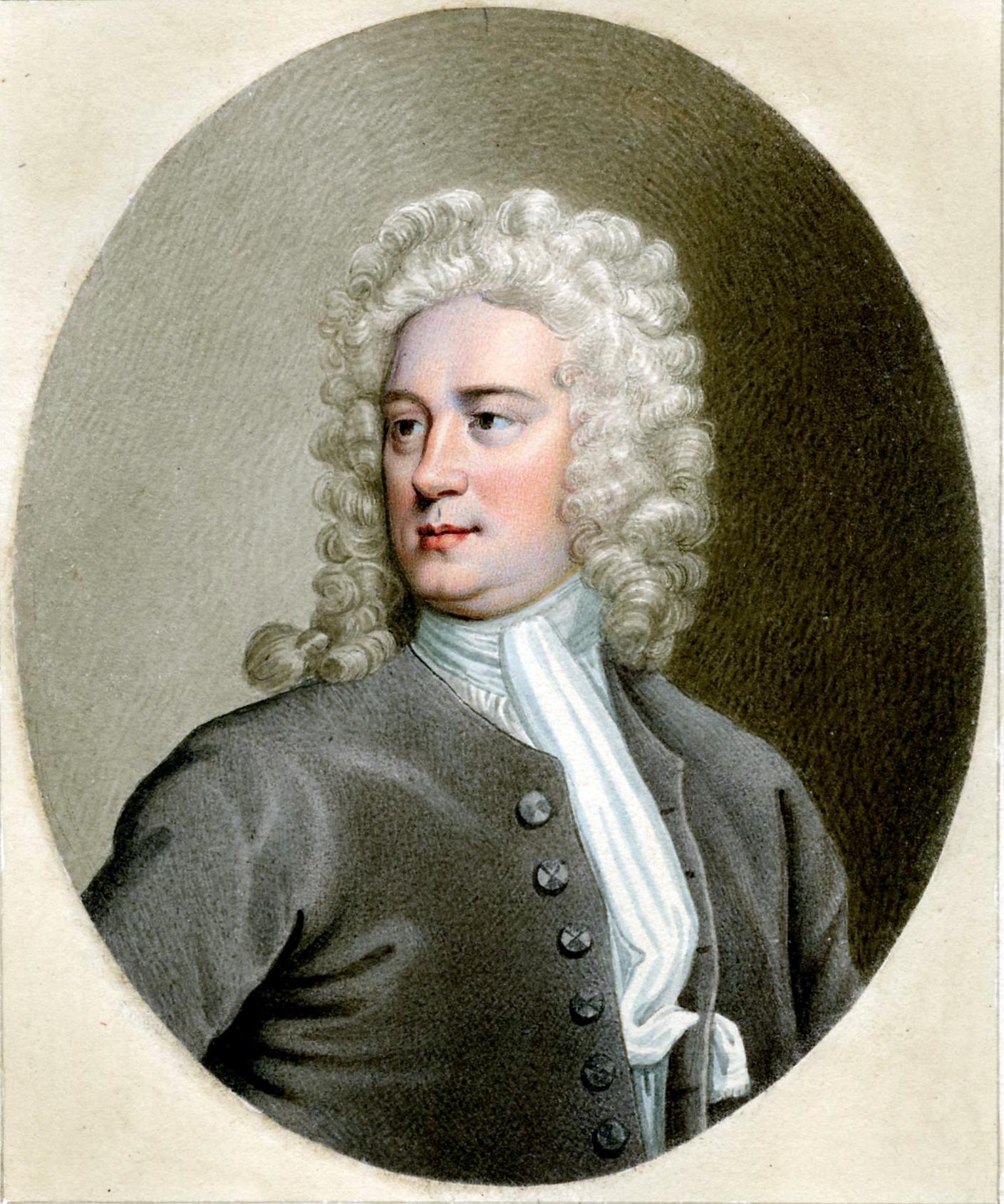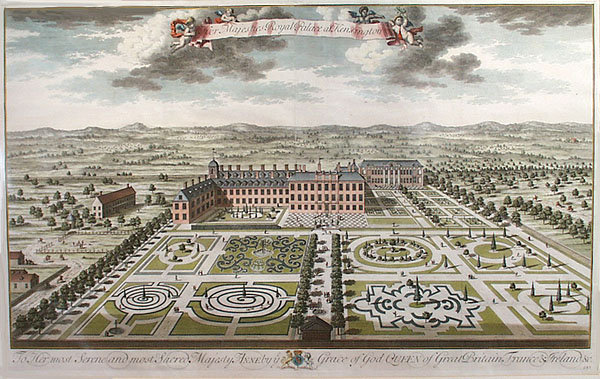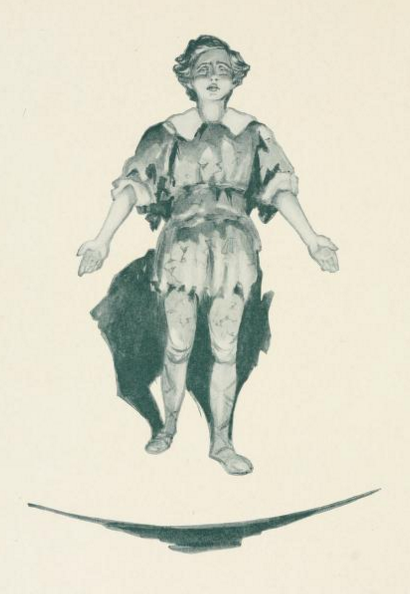|
Kensington Garden
''Kensington Garden'' is a poem by Thomas Tickell, published in 1722, as a fictional origin story for the area which would eventually be known as Kensington Gardens. Plot Kensington Garden, according to the poem, was once a fairy realm ruled by King Oberon. Albion, a descendant of the humans' royal line of England, was kidnapped as a changeling by a fairy named Milkah. Milkah uses her magic arts to ensure that Albion grows up at fairy scale, standing only a foot tall. When Albion is nineteen, Oberon's daughter Kenna falls in love with him. When King Oberon catches them during a meeting, he banishes Albion and orders Kenna to marry one of her fairy suitors, Azuriel. Albion begs for help from his distant ancestor, the god Neptune, who sends him an army with which to march on Oberon's kingdom and take Kenna back. Albion and Azuriel fight in single combat. Since fairies are immaterial beings, Azuriel easily survives what should be fatal wounds and is able to stab Albion to dea ... [...More Info...] [...Related Items...] OR: [Wikipedia] [Google] [Baidu] |
Thomas Tickell
Thomas Tickell (17 December 1685 – 23 April 1740) was a minor English poet and man of letters. Life The son of a clergyman, he was born at Bridekirk near Cockermouth, Cumberland. He was educated at St Bees School 1695–1701, and in 1701 entered The Queen's College, Oxford, taking his M.A. degree in 1709. He became a fellow of his college in the next year, and in 1711 University Reader or Professor of Poetry. He did not take orders, but by a dispensation from the Crown was allowed to retain his fellowship until his marriage to Clotilda Eustace in 1726 in Dublin. Tickell acquired the name ‘Whigissimus’, because of his close association with the Whig parliamentary party. In 1717 he was appointed Under Secretary to Joseph Addison, Secretary of State. In 1724 Tickell was appointed secretary to the Lords Justices of Ireland, a post which he retained until his death in 1740, at Bath, aged 54. Tickell owned a house and small estate in Glasnevin on the banks of the River Tolka, ... [...More Info...] [...Related Items...] OR: [Wikipedia] [Google] [Baidu] |
Kensington Gardens
Kensington Gardens, once the private gardens of Kensington Palace, are among the Royal Parks of London. The gardens are shared by the City of Westminster and the Royal Borough of Kensington and Chelsea and sit immediately to the west of Hyde Park, in western central London. The gardens cover an area of 107 hectares (265 acres). The open spaces of Kensington Gardens, Hyde Park, Green Park, and St. James's Park together form an almost continuous "green lung" in the heart of London. Kensington Gardens are Grade I listed on the Register of Historic Parks and Gardens. Background and location Kensington Gardens are generally regarded as being the western extent of the neighbouring Hyde Park from which they were originally taken, with West Carriage Drive (The Ring) and the Serpentine Bridge forming the boundary between them. The Gardens are fenced and more formal than Hyde Park. Kensington Gardens are open only during the hours of daylight, whereas Hyde Park is open from 5 am until ... [...More Info...] [...Related Items...] OR: [Wikipedia] [Google] [Baidu] |
Oberon
Oberon () is a king of the fairies in medieval and Renaissance literature. He is best known as a character in William Shakespeare's play ''A Midsummer Night's Dream'', in which he is King of the Fairies and spouse of Titania, Queen of the Fairies. Etymology Oberon is derived from Alberich (from Old High German ''alb-'' "elf" and ''-rîh-'', "ruler", "king"), the name of a dwarf from Germanic mythology. In the ''Nibelungenlied'', a Burgundian poem written around the turn of the 13th century, Alberich guards the treasure of the Nibelungen, but is overcome by Siegfried. In Old French, the name Alberich evolved into ''Alberon'' and then ''Auberon'' and ultimately into ''Aubrey''. French heroic song The name Oberon (as Auberon) is first attested to in the early 13th century entitled , wherein it refers to an elven man of the forest encountered by the eponymous hero. Huon, son of Seguin count of Bordeaux, passed through the forest inhabited by Oberon. He was warned by a hermit no ... [...More Info...] [...Related Items...] OR: [Wikipedia] [Google] [Baidu] |
Neptune (mythology)
Neptune ( la, Neptūnus ) is the god of freshwater and the sea in Roman religion. He is the counterpart of the Greek god Poseidon.''Larousse Desk Reference Encyclopedia'', The Book People, Haydock, 1995, p. 215. In the Greek tradition, he is a brother of Jupiter and Pluto; the brothers preside over the realms of heaven, the earthly world (including the underworld), and the seas. Salacia is his wife. Depictions of Neptune in Roman mosaics, especially those in North Africa, were influenced by Hellenistic conventions. He was likely associated with freshwater springs before the sea. Like Poseidon, he was also worshipped by the Romans as a god of horses, as ''Neptunus equestris'' (a patron of horse-racing). Worship The theology of Neptune is limited by his close identification with the Greek god Poseidon, one of many members of the Greek pantheon whose theology was later tied to a Roman deity. The ''lectisternium'' of 399 BC indicated that the Greek figures of Poseidon, Art ... [...More Info...] [...Related Items...] OR: [Wikipedia] [Google] [Baidu] |
Henry Wise (gardener)
Henry Wise (bapt. 4 September 1653 – 1738) was an English gardener, designer, and nurseryman. He was apprenticed to George London, working at Brompton Nursery, on the present site of the Victoria and Albert Museum, London. The two later worked as partners on parterre gardens at Hampton Court, Chelsea Hospital, Longleat, Chatsworth, Melbourne Hall, Wimpole Hall and Castle Howard, drawing inspiration from engravings of contemporary garden designs in France and the Netherlands. Wise and London translated into English two well-known French texts on gardening. The resulting work was titled "The Retir'd Gard'ner, in Two Volumes: the Whole Revis'd, with Several Alterations and Additions, Which Render It Proper for Our English Culture." The book was printed in London in 1706 and went through several printings thanks to its popularity. Kensington Gardens were laid out by Henry Wise and Charles Bridgeman with fashionable features including the Round Pond, formal avenues and a sunken ... [...More Info...] [...Related Items...] OR: [Wikipedia] [Google] [Baidu] |
Kensington Palace
Kensington Palace is a royal residence set in Kensington Gardens, in the Royal Borough of Kensington and Chelsea in London, England. It has been a residence of the British royal family since the 17th century, and is currently the official London residence of the Prince and Princess of Wales, the Duke and Duchess of Gloucester, the Duke and Duchess of Kent, and Prince and Princess Michael of Kent. Today, the State Rooms are open to the public and managed by the independent charity Historic Royal Palaces, a nonprofit organisation that does not receive public funds. The offices and private accommodation areas of the palace remain the responsibility of the Royal Household and are maintained by the Royal Household Property Section. The palace also displays many paintings and other objects from the Royal Collection. History King William III and Queen Mary II Kensington Palace was originally a two-storey Jacobean mansion built by Sir George Coppin in 1605 in the village of K ... [...More Info...] [...Related Items...] OR: [Wikipedia] [Google] [Baidu] |
The Little White Bird
''The Little White Bird'' is a novel by the Scottish writer J. M. Barrie, ranging in tone from fantasy and whimsy to social comedy with dark, aggressive undertones. It was published in November 1902, by Hodder & Stoughton in the UK and Scribner's in the US (and the latter also published it serially in the monthly '' Scribner's Magazine'' from August to November). The book attained prominence and longevity thanks to several chapters written in a softer tone than the rest of the book, which introduced the character and mythology of Peter Pan. In 1906, those chapters were published separately as a children's book, ''Peter Pan in Kensington Gardens''. The Peter Pan story began as one chapter and grew to an "elaborate book-within-a-book" of more than one hundred pages during the four years Barrie worked on ''The Little White Bird''. The complete book has also been published under the title ''The Little White Bird, or Adventures in Kensington Gardens''. Plot introduction ''The L ... [...More Info...] [...Related Items...] OR: [Wikipedia] [Google] [Baidu] |
Peter Pan
Peter Pan is a fictional character created by List of Scottish novelists, Scottish novelist and playwright J. M. Barrie. A free-spirited and mischievous young boy who can fly and Puer aeternus, never grows up, Peter Pan spends his never-ending childhood having adventures on the mythical island of Neverland as the leader of the Lost Boys (Peter Pan), Lost Boys, interacting with Fairy, fairies, Piracy, pirates, mermaids, Native Americans in the United States, Native Americans, and occasionally ordinary children from the world outside Neverland. Peter Pan has become a cultural icon symbolizing youthful innocence and escapism. In addition to two distinct works by Barrie, ''The Little White Bird'' (1902, with chapters 13–18 published in ''Peter Pan in Kensington Gardens'' in 1906), and the West End theatre, West End stage play ''Peter and Wendy, Peter Pan; or, the Boy Who Wouldn't Grow Up'' (1904, which expanded into the 1911 novel ''Peter and Wendy''), the character has been featu ... [...More Info...] [...Related Items...] OR: [Wikipedia] [Google] [Baidu] |
Gilbert And Sullivan
Gilbert and Sullivan was a Victorian era, Victorian-era theatrical partnership of the dramatist W. S. Gilbert (1836–1911) and the composer Arthur Sullivan (1842–1900), who jointly created fourteen comic operas between 1871 and 1896, of which ''H.M.S. Pinafore'', ''The Pirates of Penzance'' and ''The Mikado'' are among the best known.Davis, Peter G''Smooth Sailing'' ''New York'' magazine, 21 January 2002, accessed 6 November 2007 Gilbert, who wrote the libretti for these operas, created fanciful "topsy-turvy" worlds where each absurdity is taken to its logical conclusion; fairies rub elbows with British lords, flirting is a capital offence, gondoliers ascend to the monarchy, and pirates emerge as noblemen who have gone astray.Mike Leigh, Leigh, Mike"True anarchists" ''The Guardian'', 4 November 2007, accessed 6 November 2007 Sullivan, six years Gilbert's junior, composed the music, contributing memorable melodies that could convey both humour and pathos. Their operas have enj ... [...More Info...] [...Related Items...] OR: [Wikipedia] [Google] [Baidu] |
A Princess Of Kensington
''A Princess of Kensington'' is an English comic opera in two acts by Edward German to a libretto by Basil Hood, produced by William Greet. The first performance was at the Savoy Theatre, London, on 22 January 1903 and ran for 115 performances. The opera was the last new work performed by the members of the D'Oyly Carte Opera Company at the Savoy Theatre, and is therefore considered by some to be the last Savoy opera. The original cast included a number of the famous Savoyards, including Louie Pounds, Robert Evett, Walter Passmore, Henry Lytton, and Rosina Brandram. After the original run at the Savoy, the show toured. After that tour, the cast mostly joined the new musical, ''The Earl and the Girl'' (also produced by Greet). The piece was given a Broadway production from August to October 1903. at the IBDB Broadway Datab ... [...More Info...] [...Related Items...] OR: [Wikipedia] [Google] [Baidu] |
1720s Poems
Seventeen or 17 may refer to: *17 (number), the natural number following 16 and preceding 18 * one of the years 17 BC, AD 17, 1917, 2017 Literature Magazines * ''Seventeen'' (American magazine), an American magazine * ''Seventeen'' (Japanese magazine), a Japanese magazine Novels * ''Seventeen'' (Tarkington novel), a 1916 novel by Booth Tarkington *''Seventeen'' (''Sebuntiin''), a 1961 novel by Kenzaburō Ōe * ''Seventeen'' (Serafin novel), a 2004 novel by Shan Serafin Stage and screen Film * ''Seventeen'' (1916 film), an American silent comedy film *''Number Seventeen'', a 1932 film directed by Alfred Hitchcock * ''Seventeen'' (1940 film), an American comedy film *''Eric Soya's '17''' (Danish: ''Sytten''), a 1965 Danish comedy film * ''Seventeen'' (1985 film), a documentary film * ''17 Again'' (film), a 2009 film whose working title was ''17'' * ''Seventeen'' (2019 film), a Spanish drama film Television * ''Seventeen'' (TV drama), a 1994 UK dramatic short starring Christien ... [...More Info...] [...Related Items...] OR: [Wikipedia] [Google] [Baidu] |
British Poems
British may refer to: Peoples, culture, and language * British people, nationals or natives of the United Kingdom, British Overseas Territories, and Crown Dependencies. ** Britishness, the British identity and common culture * British English, the English language as spoken and written in the United Kingdom or, more broadly, throughout the British Isles * Celtic Britons, an ancient ethno-linguistic group * Brittonic languages, a branch of the Insular Celtic language family (formerly called British) ** Common Brittonic, an ancient language Other uses *''Brit(ish)'', a 2018 memoir by Afua Hirsch *People or things associated with: ** Great Britain, an island ** United Kingdom, a sovereign state ** Kingdom of Great Britain (1707–1800) ** United Kingdom of Great Britain and Ireland (1801–1922) See also * Terminology of the British Isles * Alternative names for the British * English (other) * Britannic (other) * British Isles * Brit (other) * Briton (d ... [...More Info...] [...Related Items...] OR: [Wikipedia] [Google] [Baidu] |





.jpg)